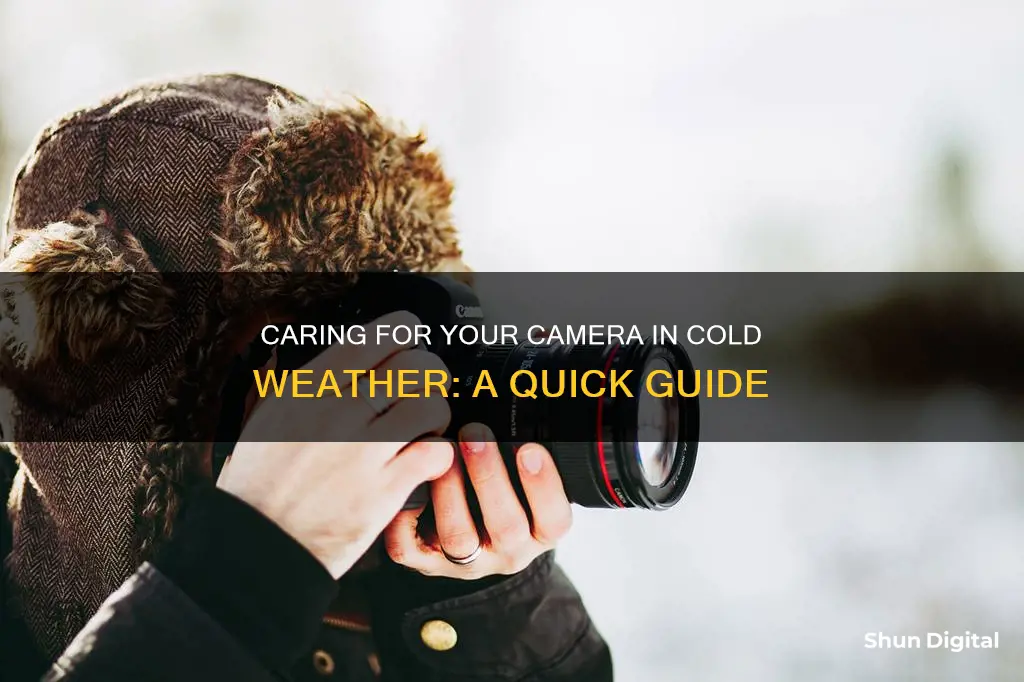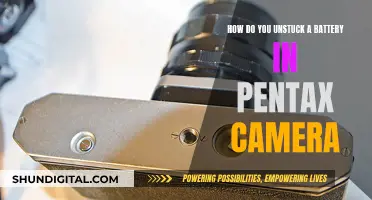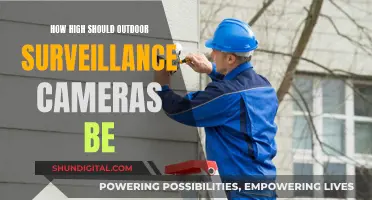
Taking pictures in cold climates is less about the type of camera you have and more about how you protect and use it. Here are some tips for taking care of your camera in cold weather.
First, avoid frost and moisture build-up. Keep your camera in its case when not in use to prevent frost from obscuring the viewfinder or lens or finding its way inside. Avoid changing lenses in rainy or snowy weather, as a single snowflake inside your camera could cause problems. Put the lens cap on when the camera is not in use to prevent condensation and frost. Carry soft lens-cleaning tissues to dab moisture or frost off the lens.
Second, pay attention to your batteries. Carry spare batteries and keep them warm in an inside pocket until needed. Turn off unnecessary camera features such as the LCD screen, flash, image stabilisation, and autofocus to prolong battery life.
Third, protect your camera from condensation. Allow your camera to adjust to temperature changes gradually by leaving it in an intermediate environment such as a porch or garage for at least an hour. Put your camera in an airtight bag with a sachet of silica gel to absorb any condensation.
Finally, provide some padding. In cold weather, plastic and glass become more brittle, so use a padded camera bag to protect your equipment if you drop it. Keep your camera in the bag at all times and only remove it when standing still on firm ground, ready to shoot. Use the neck or wrist strap to prevent dropping the camera, especially if your hands are cold and wet or if you're wearing gloves.
What You'll Learn

Prevent condensation by checking dew point temperature
When moving between environments with different temperatures, condensation can form on your camera. This is because the camera's temperature was at or below the dew point temperature of the warmer environment.
The dew point temperature is the temperature at which the humidity (or water vapour) in the air will condense (become a liquid again). It is provided by every weather service and can be found on weather websites or applications like AccuWeather and WeatherBug.
To prevent condensation from occurring, you should know the dew point temperature before heading out. Keep your camera's temperature above the dew point temperature (keep it warm). If you have a compact camera, you can keep it against your body, for example, on a lanyard around your neck and inside your top. If you have a DSLR camera, you can keep it in your camera bag, which will act as a buffer between the cold outdoors and the warm interior. Carry your camera around outside for a little while before opening the bag to make sure it has adjusted to the outdoor temperature.
Troubleshooting Camera Raw: Why It Reads Wrong
You may want to see also

Avoid breathing on the lens
When you're out and about in the cold, capturing the perfect photo, the last thing you want is condensation on your lens. Breathing on your lens in cold weather is a surefire way to fog up your camera, resulting in a milky layer of frost on the glass. Not only is this visually unappealing, but it can also take hours to defrost, putting your camera out of action for the rest of the day.
So, how can you avoid this? Well, it's all about being mindful of where you breathe. When you turn your camera to check the lens settings, be careful not to exhale onto the lens. Similarly, if you're standing in front of your camera, ensure you don't accidentally breathe onto it. Wearing a neck gaiter or balaclava can help here, as it will direct your breath upwards, away from your camera.
Another way to prevent condensation on your lens is to use a lens cap when you're not shooting. Get into the habit of snapping on that cap whenever you take a break or move to a new location. This simple step can make a big difference in keeping your lens fog-free. Additionally, consider using a clear filter on the front of your lens. That way, if frost does form, you can simply wipe it off without risking damage to the lens itself.
It's also worth noting that condensation can occur when you move between cold and warm environments, such as going from outdoors to inside a heated building. To minimise this, try to let your camera adjust to temperature changes gradually. Leave it in an intermediate environment like a porch or garage for an hour before bringing it inside. During this time, keep your camera in a sealed airtight bag, like a ziplock bag, to prevent moisture buildup.
By following these simple tips, you can help ensure your lens stays clear and condensation-free, even in the coldest of temperatures. So, bundle up, grab your camera, and happy shooting!
Cameras Beyond China: Exploring Alternative Manufacturing Hubs
You may want to see also

Protect your camera from frost and moisture
Frost and condensation are two of the biggest threats to your camera in cold weather. Here are some tips to protect your camera from these issues:
Prevent Frost
Frost can form on your camera very quickly in cold weather, especially if you're shooting at night or doing long exposures. To prevent this, try to keep your camera warm by wrapping something around it or using a hand warmer. You can also buy heat pads from camping stores and stick them to your camera for short-term warmth.
Deal with Condensation
Condensation is caused by rapid changes in temperature, such as when you go from a cold outdoor environment to a warm indoor one. To prevent condensation, try to avoid these rapid temperature changes. Leave your camera in an intermediate environment like a porch, garage, or car for at least an hour to let it adjust gradually. Remove the battery during this time to keep it warm and preserve its charge.
If you do get condensation on your camera, put it in an airtight bag like a Ziploc with a sachet of silica gel. This will help absorb the moisture and protect your camera from water damage.
Other Tips:
- Keep your camera in a padded bag to protect it from drops and to help insulate it.
- Use a lens hood and rocket blower to keep snow off your lens.
- Avoid breathing near your lens in cold weather to prevent frost.
- Keep your camera and lenses in a sealed bag before going inside to prevent condensation.
Leica Cameras: German-Made, Valuable Photography Equipment
You may want to see also

Keep your camera in its case when not in use
Keeping your camera in its case when not in use is a great way to protect it from the elements and reduce the risk of damage when shooting in cold weather. Here are some tips to maximise the benefits of storing your camera in its case:
Ensure you have a suitable case for cold weather photography. A padded camera bag or case will not only protect your equipment from impact if you accidentally drop it, but it will also help keep your camera dry. A dedicated camera bag is ideal, as it will be well-insulated and designed to keep your gear at a consistent temperature. If you don't have a camera bag, a regular bag with a zip seal can also work.
Keep your camera in its case whenever you're not actively taking pictures. This will help prevent frost and condensation from building up on the camera's surfaces and internal components. The case acts as a barrier between the camera and the outside air, minimising the amount of moisture that can condense and freeze on your equipment.
Use a lens cap when the camera is not in use. This will provide an additional layer of protection against condensation and frost on the front element of your lens. It's a simple yet effective way to keep your lens clear and ready for shooting.
Be mindful of temperature changes when going indoors. Bringing a cold camera into a warm room can cause condensation to form on the camera and lens surfaces. To avoid this, leave your camera in its case and sealed inside the bag for a few hours to allow it to warm up gradually. Keep the bag closed and zipped while still outdoors, and only take your camera out once it has adjusted to the indoor temperature.
Consider using a holster-style camera case. These cases can be worn on a waist belt, providing easy access to your camera while also protecting it from the elements. They often feature a snap closure and a zip, allowing for quick access or better weatherproofing depending on the conditions.
By following these tips and utilising your camera case effectively, you can help ensure your camera stays safe and functional during cold weather shoots. Remember, it's important to strike a balance between protecting your camera and having easy access to capture those stunning winter shots!
Where is My Lenovo's Camera?
You may want to see also

Take spare batteries
When photographing in cold weather, it's important to remember that a drop in temperature can cause your camera battery to deplete much more rapidly. A decrease of just 10 °C (18 °F) can cause your battery life to be cut by up to half, so it's crucial to bring spare batteries to avoid cutting your photoshoot short.
To maximise the life of your spare batteries, keep them in an inside pocket of your coat or jacket, or somewhere else close to your body, so that they stay warm. This way, when you need to swap batteries, you can put the depleted one in the same pocket to warm it up, and you may find it has some more life left in it.
If you're shooting mirrorless, you could also consider bringing a portable charger or power bank to act as a power source for your camera.
It's also important not to warm your batteries up too quickly. Don't put them too close to a heat source like a fire or heater, as this can damage the battery. Instead, warm them up slowly using body heat or by keeping them in a warm room.
Some photographers use inexpensive hand warmers to keep their batteries warm, either by putting the heating pad directly on the batteries or by keeping them together in a pocket.
Fighting Speeding Camera Tickets in Illinois: What You Need to Know
You may want to see also
Frequently asked questions
Know your camera's limits. Some cameras are more equipped to handle the cold than others. If you can, research how your camera model handles the cold.
The main issue affecting cameras is condensation, which results from a change in temperature. This can lead to moisture inside your camera, damaging electrical components and leaving marks on the inside of lenses.
Ensure any temperature changes happen as gradually as possible. You can do this by leaving your camera in an intermediate environment, such as a porch or garage, for at least an hour before taking it outside. You can also put your camera in an airtight bag, such as a Ziploc, with a sachet of silica gel to soak up any condensation.
The cold will deplete your camera battery much faster, so always carry a spare. Keep your spare batteries inside your jacket to keep them warm and maximise their life.
In cold weather, plastic and glass become more brittle, so be careful not to drop your camera. Keep it in a padded bag or case, and use the neck or wrist strap to avoid dropping it.







